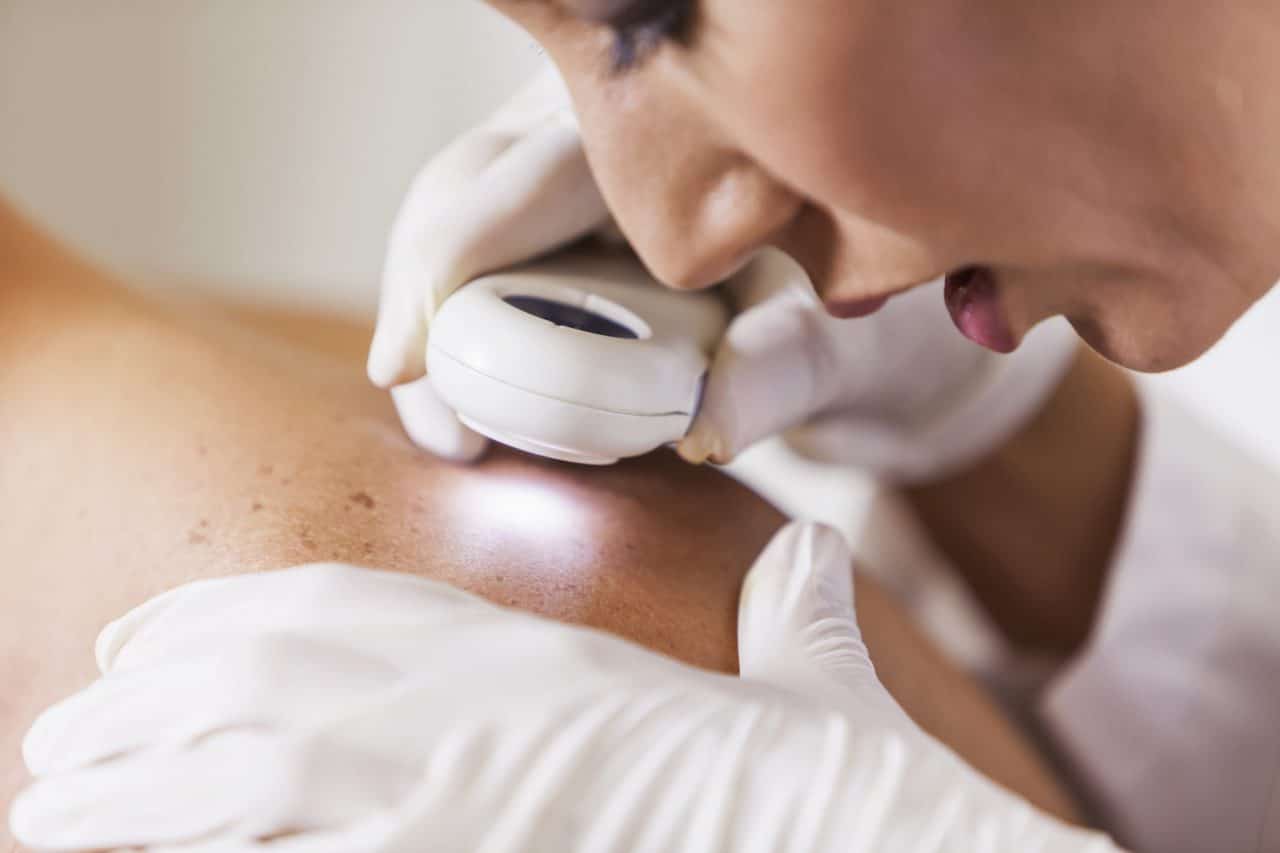Skin cancer can develop on any part of the body that receives frequent sun exposure – the scalp, lips, ears, neck, chest, arms and hands, for instance. One of the areas most prone to skin cancer is the face. It can affect people of all skin tones, including individuals with darker complexions.
What Are the Types of Skin Cancer?
Facial skin cancer is divided into three different types:
- Basal cell carcinomas affect the face, ears and scalp, and are characterized by a pearly, waxy bump; a flat, flesh-colored lesion; or a brown scar-like lesion.
- Squamous cell carcinomas are most typically found on the face, lips and ears. Signs include a firm, reddish nodule and a flat lesion with a scaly or crusted surface.
- Melanomas can occur anywhere, but are commonly found on the head or neck. Symptoms of facial melanoma include a mole that changes size or color, or bleeds; a brownish spot with dark speckles; a lesion with an irregular border and parts that appear red, blue, blue-black or white; and dark lesions on the mucous membranes lining the nose and mouth.
How are skin cancer and skin lesions different?

A skin lesion is a part of the skin that has an abnormal growth or appearance compared to the skin around it. There are two categories of skin lesions, primary and secondary.
Primary skin lesions are present at birth or are acquired over your lifetime. A birthmark would be an example of a primary skin lesion. Secondary skin lesions evolve from primary lesions or develop as a consequence of your activities. Melanoma resulting from sun exposure would be an example of a secondary skin lesion.
There are a few other facial skin cancers that are more rare. Look for red or purple patches on the skin or mucous membranes; firm, shiny nodules in the hair follicles or just beneath the skin; or hard, painless nodules on the eyelids or other parts of the face.
Make an appointment with Lake Jackson ENT & Med Spa if you notice any change to your skin that appear abnormal.
What Causes Skin Cancer?
Facial skin cancer is the result of mutations in the skin cells that cause them to grow out of control. The biggest risk factor for skin cancer is ultraviolet radiation from sunlight and tanning beds. Those with fair skin, a history of sunburns and excessive sun exposure, moles or a family history of skin cancer are more prone to developing it.
How Is Skin Cancer Treated?
Treatment for facial skin cancer depends on the type, size and location of the cancer, as well as the patient’s overall health.
Small lesions limited to the surface of the skin can often be removed with a simple skin biopsy. Other superficial skin cancers detected early can often be removed by freezing with liquid nitrogen or vaporizing with laser therapy. Excisional surgery, or Mohs surgery for larger growths, can also be effective in cutting out cancer without causing damage to the surrounding skin.
When surgery isn’t an option, radiation therapy may be recommended. Chemotherapy involves the use of creams or lotions that contain cancer-killing drugs applied directly to the skin, and is especially effective in cancers that are confined to the top layer of skin. For cancers that have spread to other parts of the body, systemic chemotherapy is often effective.
Skin Cancer Surgery
Surgery is the most common treatment for skin cancer. Whether you’re suffering from basal cell cancer, squamous cell cancer or melanoma, chances are your doctor will recommend a surgical procedure to remove the tumors and, often, cancerous lymph nodes as well.
Surgery Types
There are a variety of skin cancer surgery procedures to consider based on your type of cancer and how much it has spread. The most common skin cancers are referred to as “nonmelanoma skin cancers” and are slow growing and easily treatable.
Basal cell carcinomas (which comprise about 90 percent of all skin cancer diagnoses) fall under this category, as do squamous cell carcinomas. Neither of these varieties usually metastasizes, but they are considered malignant due to their ability to destroy surrounding tissue.
The most common surgical procedure for treatment of nonmelanoma skin cancers is Mohs surgery. Also known as chemosurgery, the cure rate is very high – 98 percent or greater for both basal cell and squamous cell carcinomas.
Mohs surgery is a four-step process that entails surgically removing sections of tissue, examining each specimen, mapping the cancerous areas and – when all cancerous cells have been removed – performing reconstructive surgery.
Melanoma is the deadliest form of skin cancer. Surgery is required to remove the primary melanoma as well as any cancerous lymph nodes. Surgical procedures to treat melanoma include local excision, wide local excision, lymph node dissection and sentinel lymph node biopsy.
Cure rates vary widely and are largely dependent upon how early melanoma is detected and how far it has metastasized in the body.
Prevention
The best way to prevent skin cancer is to avoid prolonged exposure to the sun, particularly between the hours of 10 a.m. and 4 p.m., when ultraviolet light is at its peak. Use plenty of sunscreen with an SPF of 15 or higher, and wear hats, long-sleeved shirts and pants. Be on the lookout for any changes to your skin, particularly suspicious-looking moles. If you’re older than 40, have a professional examine your skin once a year.
To make an appointment with a Lake Jackson ENT & Med Spa provider, visit our online scheduling link.